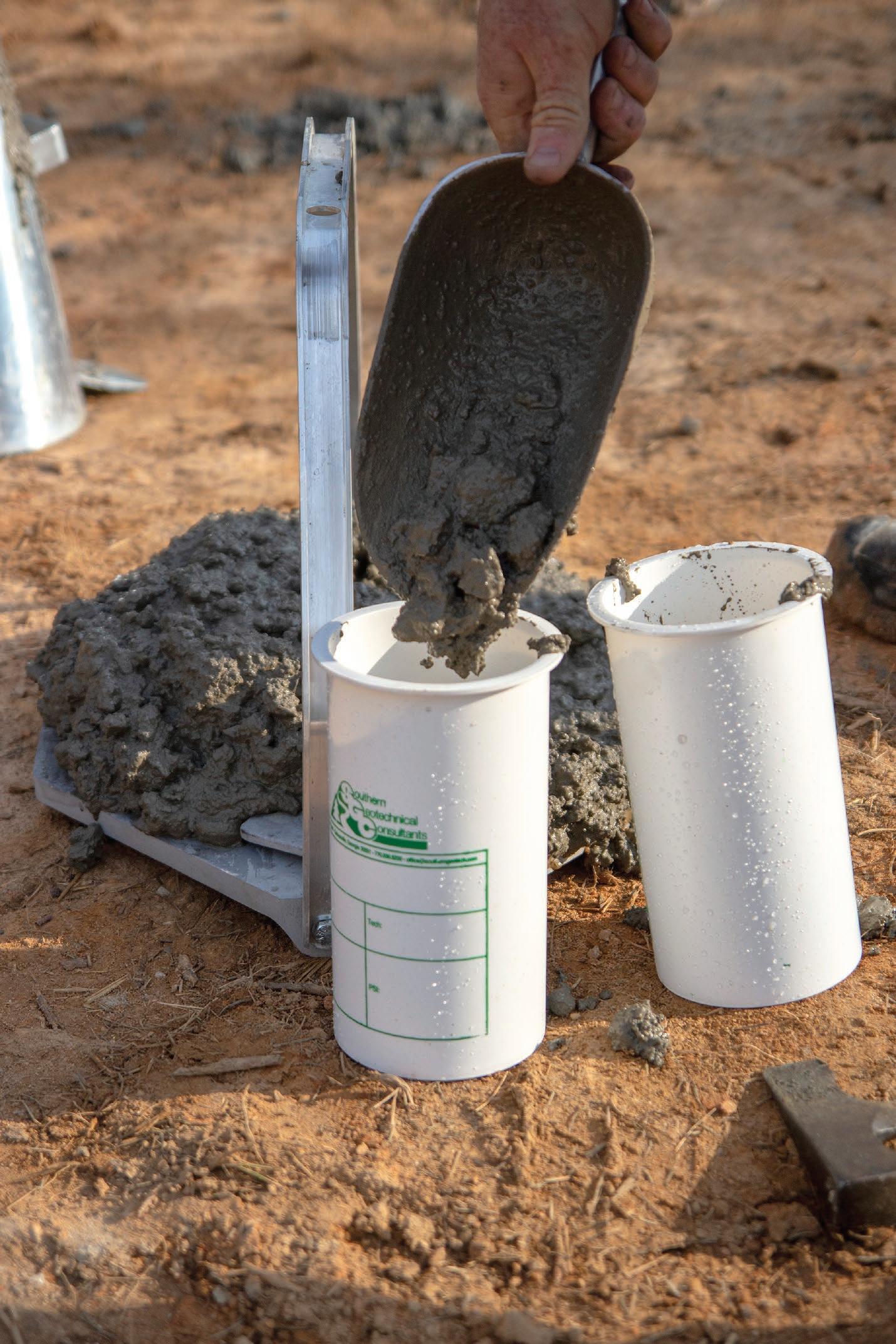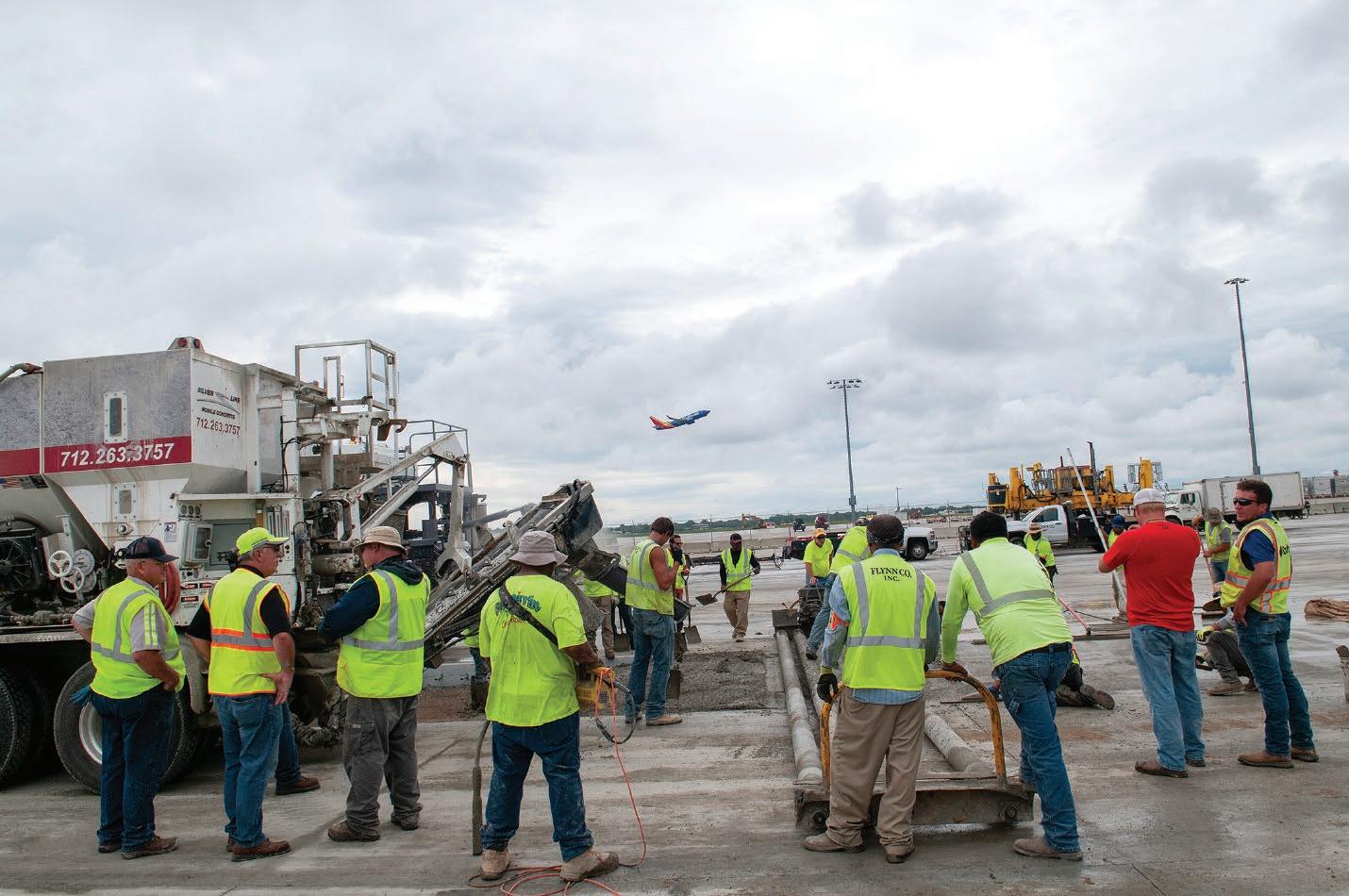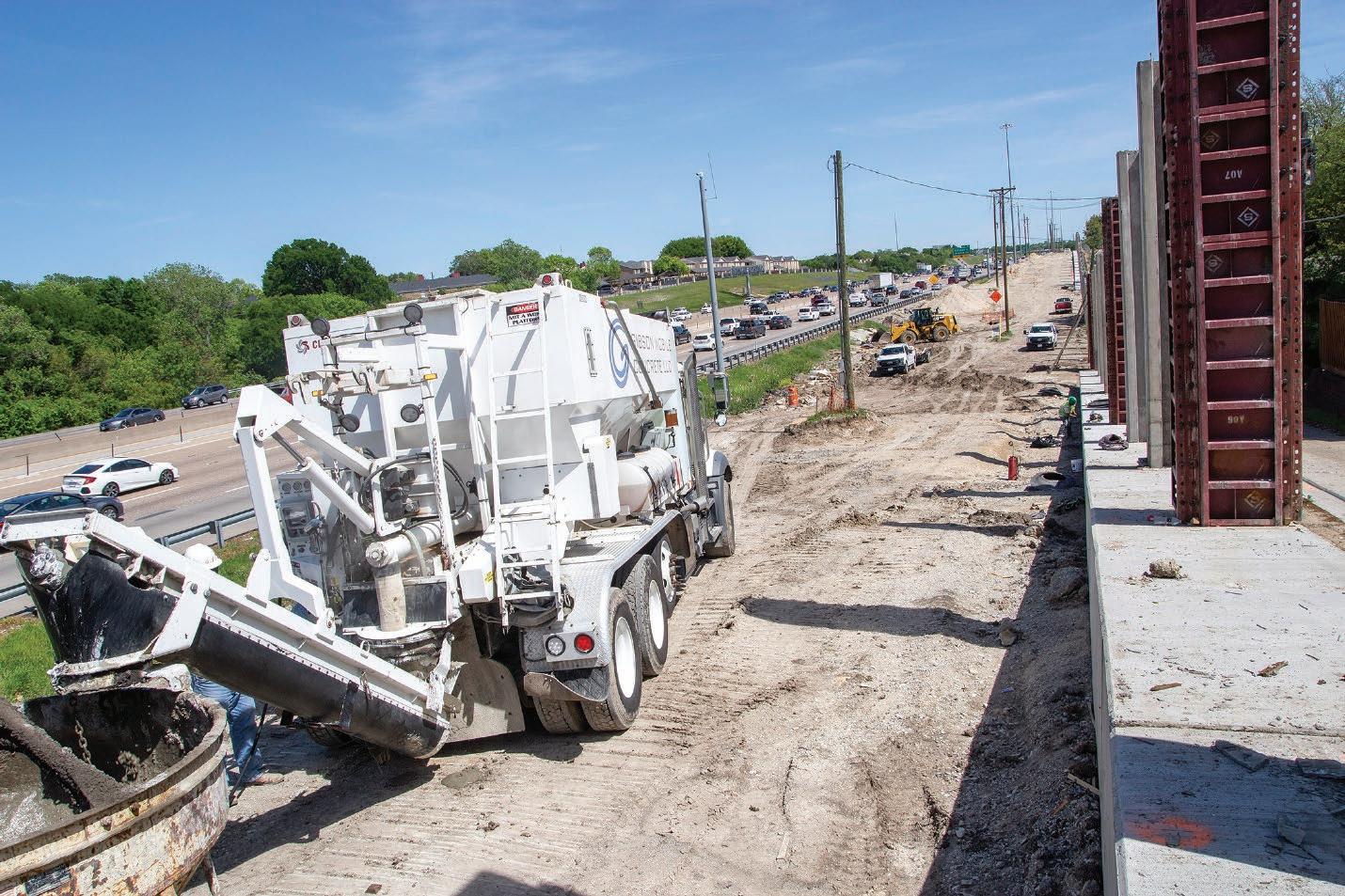KEY ISSUES TO CONSIDER WHEN CHOOSING MOBILE CONCRETE PRODUCTION PLANTS FOR AIRPORT RUNWAY AND MAINTENANCE
Going Mobile: How Airports are Embracing the Mobile Cement Plant James Butler, Staff Writer Airport surfaces need to be tougher, more durable and faster to lay, which is why mobile units that can batch and mix concrete on the spot offer important advantages.
F
OR DECADES, airport runways have relied on a similar approach to laying cement. In the first instance, a batch is produced and then transported to the works location. However, several factors are combining to encourage a move to mobile cement plants which mix the cement there and then on the spot. With operators now working on increasingly fine margins, the time is right for many airports to go mobile. Runway surfaces are one of the most important features of an airport.They have to ensure the safe arrival and departure of aircraft and handle an increasing volume of traffic. With the strain placed on tarmac increasing every year, keeping it in top condition is crucial. At the same time, airports operate in an environment in which every penny and every second is critical. To meet these challenges, operators will have to be innovative and embrace the latest technology available.
Rethinking Surfaces Today’s runways come under strain from all angles. Aircraft are becoming heavier and flights more frequent. Regulations are strict. The ICAO’s Annex 14 document3 requires asphalt surfaces to: • be constructed and maintained without deviations of bumps which would affect aircraft operations. It must be resistant to shearing and rutting to remain smooth and free draining; • have good friction characteristics when the surface is wet; • be maintained free of loose material on the surface to prevent damage to the aircraft. In practice, this requires airport asphalt to be durable and resistant. Some of these regulations are contradictory. It is possible, for example, to construct a highly deformation resistant mixture with coarsely graded asphalt, but such a mixture is unlikely to be durable. Accordingly, any surface mixture will always have to be a balance of these
requirements to produce something which meets the demands of the regulator. Equally, each surface will require a regular schedule of maintenance and measurement to ensure it remains compliant. Any surface which requires high levels of maintenance and regular repair will increase the costs of daily operations and eat into the financial sustainability of the operation. Today, this is becoming increasingly serious thanks to the greater demands being placed on surfaces. The methods used in the construction of runway surfaces still often trace their origins back to the 1940s and 50s. As such, most runway surfaces are constructed from asphalt surfaces which are 40 to 60mm, densely graded with grooves sawn across them to promote skid resistance. However, as a paper in ScienceDirect shows,4 aircraft have become much heavier and more demanding on runway surfaces. The report suggests that, as a result, traditional airport asphalt specification has failed to guarantee good aircraft surface performance. To counter this issue, airports have been looking at alternative asphalt mixes with fresh approaches and equipment taking the modern airport away from the traditional approach to surfacing. For example, in the 70s and 80s, airports such as Norfolk Naval Air Station, Fallon Naval Air Station as well as commercial airports (Newark International Airport, John F. Kennedy International Airport, and Tampa International Airport) started to use fiber reinforced concrete5. According to a report from the National Concrete Pavement Technology Centre, “A 20-year survey of the post-tensioned FRC section (1,200 ft in length) and FRC-only sections with transverse joint spacing varying between 85 and 200 ft demonstrated that the taxiway is experiencing excellent performance.”
Runway surfaces are one of the most important features of an airport. They have to ensure the safe arrival and departure of aircraft and handle an increasing volume of traffic
WWW.AIRPORTTECHNOLOGYREPORTS.COM | 9






